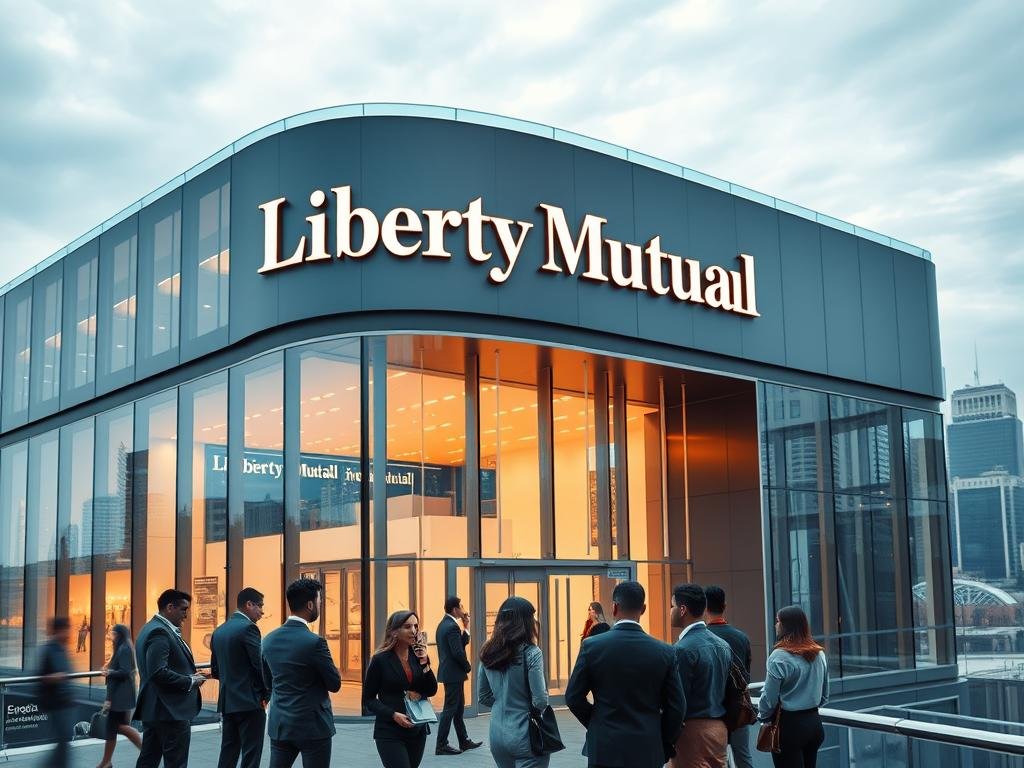You need a clear, practical guide that explains how an established insurer fits into your enterprise protection plan. This introduction sets a straight path. It frames how liberty mutual supports capital efficiency, cash-flow stability, and continuity planning.
The content here is strictly informational. The material mirrors what the official website states: it is not an offer or a solicitation for investment advisory or management services. You should treat it as background information to share with your advisors.
This guide helps you link business priorities to practical solutions. You will learn how to evaluate products, align coverage with controls and contracts, and prepare questions for brokers and advisors. Use these insights to move from learning to action with confidence.
Key Takeaways
- This guide is informational and does not constitute an offer or solicitation.
- Liberty Mutual’s role is shown as an experienced insurer in enterprise risk planning.
- Learn to match products to your risk profile and global operations.
- Use the website information to prepare compliant conversations with advisors.
- Focus on capital efficiency, claims readiness, and coherent program design.
Understanding Liberty Mutual’s Global Wealth Protection Ecosystem
Start by viewing global wealth protection as a coordinated framework that keeps assets, earnings, and cash flow intact across borders. In practice, this means blending insurance, surety, and reinsurance to support operations in multiple jurisdictions.
How the pieces fit: Liberty Mutual operates within Global Risk Solutions (GRS), which includes regional and specialty groups. That structure gives underwriting capacity and claims capability you can tap for property and specialty exposures.
Use the insurer’s network to align local policies with enterprise governance. Your team, internal professionals, and liberty mutual staff work together to set appetite, limits, and retentions that match board directives.
- Operational definition: coordinated use of products and services to protect assets and cash flows.
- Functional role: underwriting, claims handling, and multinational delivery by dedicated teams.
- Compliance note: the website information is educational only and is not an offer or solicitation; consult qualified professionals before acting.
global-wealth-insurance-liberty-mutual: Scope, Services, and Global Risk Solutions
Start with a practical view of how GRS bundles specialty teams, surety, and reinsurance into one delivery model. This helps you see how capacity and local execution line up for cross‑border needs.

Inside Global Risk Solutions
GRS North America, Liberty Specialty Markets, and Global Surety work as coordinated parts of liberty mutual to provide multinational capacity and local execution for your companies.
Mid-to-large commercial coverage
You’ll map core lines—property, casualty, and specialty—plus surety and reinsurance that support layered programs and captive strategies.
Creating a global safety net
A coordinated team and claims expertise form a practical safety net. Meetings, loss adjustment, and account stewardship help your management protect liquidity and continuity.
From auto to property
Auto, fleet, and logistics risks integrate with site-based property and liability programs so products and services align across jurisdictions.
How information flows
- Underwriting, policy issuance, and claims handling share information to keep stakeholders aligned.
- Governance rests with your business leaders, brokers, and liberty mutual teams working on limits and service standards.
“One of the world’s most powerful safety nets for our customers.”
Applying Liberty Mutual’s Capabilities to Your Cross-Border Risk Strategy
Start by mapping how assets, employees, and contracts move across borders. Build a concise inventory of property, revenue streams, and staff locations. This map helps you spot concentration, regulatory gaps, and exposures that require insurance or engineering controls.
Mapping exposures: assets, employees, and operations across jurisdictions
Capture site details, local policies, and vendor contracts so you can align coverage to actual operations. Use the map to decide where a global master policy makes sense versus locally admitted placements.
Coordinating with professionals: legal, accounting, and management insights for compliance
Set governance guardrails—management oversight, documentation standards, and escalation paths—so your team coordinates with legal and accounting professionals. That coordination keeps compliance consistent across countries.
Due diligence checklist: insurer strength, claims handling, and multinational program structure
Pressure‑test insurer selection with a checklist that prioritizes financial strength, multinational network, claims performance, and service delivery. Include service metrics for bordereaux cadence and stewardship meetings.
- Information flow: standardize submissions, endorsements, certificates, and claims data so the right team gets the right details on time.
- Claims governance: set incident intake, documentation, reserve visibility, and recovery tracking to reduce friction during high‑stress events.
- Enterprise context: consider asset‑liability alignment and capital management; note Patrizio Urciuoli’s team role at Liberty Mutual Investments as contextual background.
“Treat the website information as informational only and consult licensed professionals before acting.”
Conclusion
Finalize your multinational plan with clear milestones and ownership. Define who on your management team owns data, reporting, and carrier meetings. Use website disclosures and public data to benchmark options.
Consolidate coverage across property, auto, and specialty so products complement controls and procedures. Train employees on how to access support, follow incident steps, and keep records for accounting and claims.
Prioritize carriers using objective criteria—financial strength, network reach, claims capability, and governance—so liberty mutual insurance can be judged alongside alternatives. Keep a living playbook, run drills, track KPIs, and schedule discovery meetings to move from planning to action.


